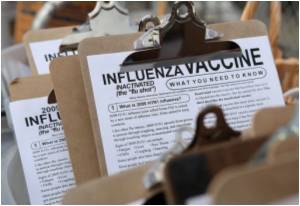At the beginning of the 2011-12 flu season, a new study finds that the proportion of nursing home patients who get a shot remains lower than a national public health goal and that

In the study, a team led by Brown community health investigator Shubing Cai looked at hundreds of thousands of patient records from more than 14,000 nursing homes each year between the 2006-07 and 2008-09 flu seasons.
The elderly are especially vulnerable to the flu, with people older than 65 accounting for the majority of flu-related deaths every year in the United States.
What the researchers found is that the overall vaccination rate in the latest year is 82.75 percent, which is short of the 90 percent goal set by Medicare and Medicaid. For whites the rate was 83.46 percent, while for blacks it was 77.75 percent. The rates for both races were slightly higher than in 2006-2007 when whites had a rate of 82.62 percent and blacks saw a rate of 75.42 percent.
When the team analyzed the relative risk of going unvaccinated, they found that while the disparity is dropping overall, it remains significant even within the same homes where service quality and staffing levels are presumably the same for blacks and whites. In 2008-09 blacks overall were about 23 percent less likely than whites to be vaccinated and about 15 percent less likely to be vaccinated as their white neighbors within the same home.
Offers refused and not received
Advertisement
The higher rate of refusal among blacks declined over time, but didn't fully explain the disparity within a facility, Cai said.
Advertisement
And blacks were also less likely to be offered vaccines.
Finding the single best way to resolve the disparity may well require interventions to determine what mix of factors are afoot in individual homes, Mor said. One question worth further study, he said, is whether the higher rate of vaccine refusal among black patients perhaps reflects how the vaccines are being offered.
"The way to address the within-facility disparity is to find out why there are these refusals and determine better ways of communicating the vaccine's benefits that specifically addresses patients' reluctance and refusal," he said.
Source-Eurekalert











